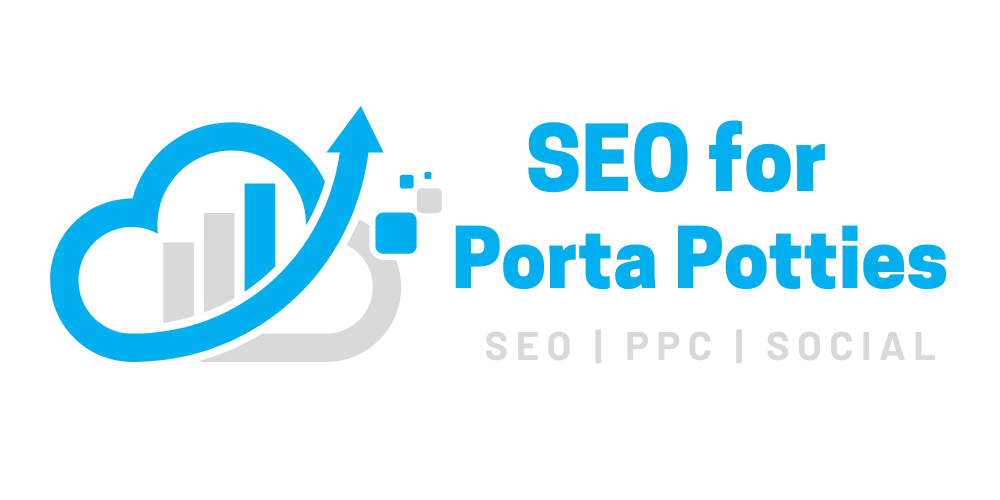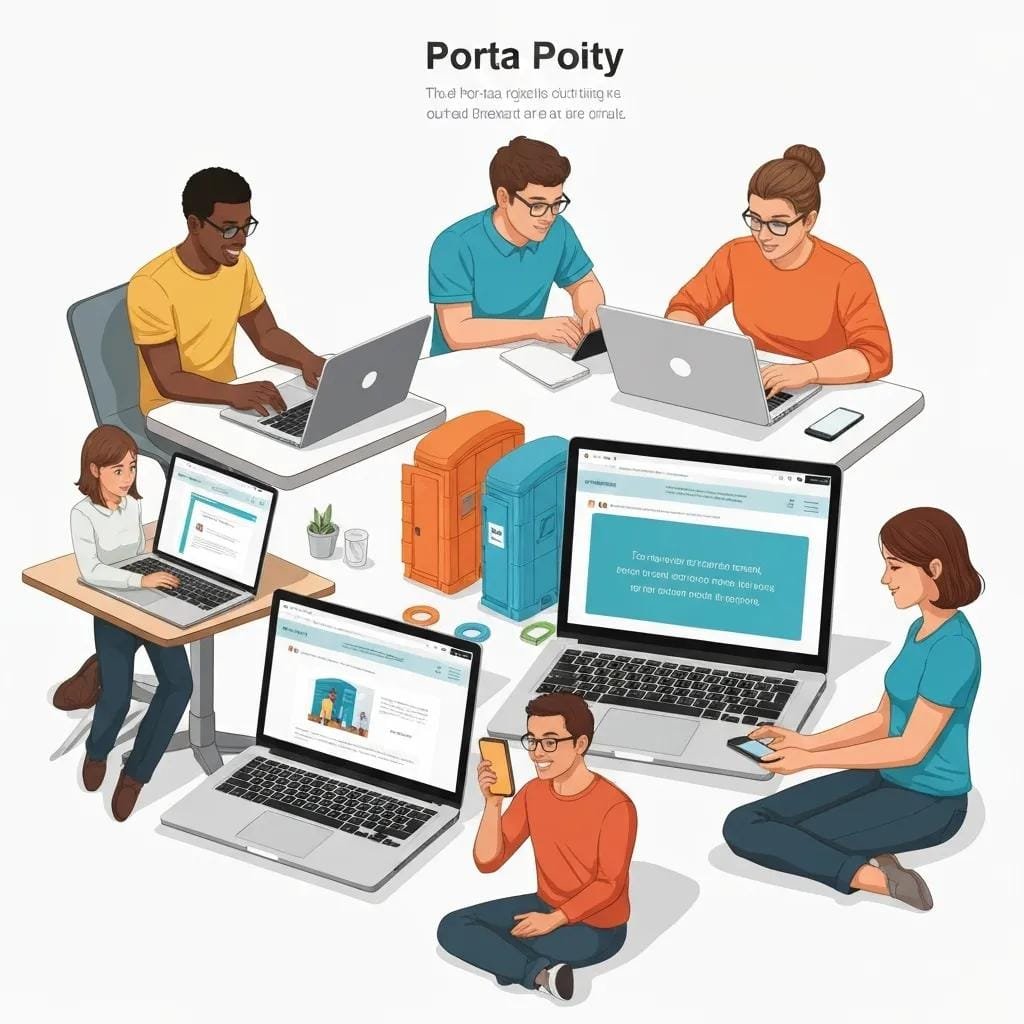Optimizing your website for local search visibility is essential for generating high-quality leads and outranking your competitors in the bustling local market. In this article, we explore on-page SEO tactics that boost local rankings, focusing on keyword research, meta tag optimization, content quality, and more. Learn how to transform your website into an effective lead magnet for your porta potty marketing business.
Key Takeaways
- On-page SEO is critical for local search rankings, influencing every aspect of website performance.
- Effective local keyword research and meta tag optimization drive higher click-through rates and conversions.
- Combining local SEO with on-page techniques like schema markup, quality content, and proper internal linking leads to improved visibility.
- A well-optimized Google My Business profile, supported by local backlinks and strategic performance measurements, plays a significant role in boosting local rankings.
What Is on-Page SEO and Why Is It Crucial for Local Rankings?


On-page SEO means optimizing individual webpages to rank higher and attract more relevant traffic. It enhances local rankings by improving website structure, content quality, keyword density, and meta tags, ensuring that local customers find your porta potty rental services when searching for nearby solutions.
How Does on-Page SEO Impact Local Search Results?
It helps search engines understand your content’s geographic relevance and service offerings. For example, including your city name throughout the content boosts local visibility and positions your business as a trusted local provider.
What Are the Key on-Page SEO Elements for Local Businesses?
Key elements include optimized title tags, meta descriptions, header tags, keyword-rich content, image alt texts, and well-structured URLs. Consistency in your name, address, and phone number (NAP) across pages also builds trust with users and search engines. local seo
How Do Local SEO and on-Page SEO Work Together?
On-page SEO creates clear, location-specific content, while local seo emphasizes geographical signals and Google My Business optimization. This synergy ensures potential customers receive accurate, context-rich information when searching for porta potty services.
How to Conduct Effective Local Keyword Research for on-Page SEO
Local keyword research is vital for tailoring your content to what local users search for when looking for portable restroom rentals. This involves using keyword research tools, checking search volumes, and integrating long-tail, location-specific keywords.
What Are the Best Tools for Local Keyword Research?
Popular tools include Google Keyword Planner, SEMrush, Moz, and Ahrefs. Google Trends and local-specific keyword generators can also help uncover relevant queries.
How to Identify Location-Based and Long-Tail Keywords?
Begin with brainstorming terms like “portable toilet rental near me” or “affordable porta potty rental in [City Name].” Use research tools to assess search volume and competition, then integrate these less competitive, long-tail keywords naturally into your content.
How to Integrate Local Keywords Into Your Website Content?
Place local keywords in title tags, headings, meta descriptions, and body content. For example, using “best porta potty rentals in Miami” signals local relevance to search engines while including references to local landmarks and events further contextualizes your offering. local seo
How to Optimize Title Tags and Meta Descriptions for Local SEO


Title tags and meta descriptions form the first impression for potential customers. Using location-specific language here can significantly boost organic click-through rates.
What Are Best Practices for Writing Localized Title Tags?
Include the primary keyword with your business name or location, for example: “Portable Toilet Rentals in Miami – [Business Name].” Keep titles concise (50–60 characters) and unique for each page.
How to Craft Meta Descriptions That Improve Local Click-Through Rates?
Write compelling summaries with a clear call-to-action, local modifiers, and the primary keyword. Meta descriptions should be 150-160 characters long, such as “Serving the greater Miami area” or “Trusted porta potty rentals in [City].”
How to Use Schema Markup to Enhance Title and Description Visibility?
Implement LocalBusiness schema markup to give search engines detailed business information (location, service area, hours, reviews). This increases the chance of rich snippets and better visibility in local search results.
What Are the Best on-Page SEO Techniques to Boost Local Rankings?
Boost local rankings by optimizing website content, structure, and multimedia to emphasize local relevance. Techniques include header tag optimization, improved content quality, image optimization, and effective internal linking.
How to Optimize Header Tags for Local SEO?
Use a hierarchical structure; your H1 should include the main keyword and location, while H2s and H3s break content into clear sections that detail your services.
How to Improve Content Quality and Relevance for Local Audiences?
Research local topics and include valuable details like statistics, case studies, or customer testimonials regarding porta potty rentals. High-quality, relevant content builds authority and encourages longer visits.
How to Optimize Images With Local SEO in Mind?
Use descriptive file names and alt text with local keywords (e.g., “Miami portable toilet rental for construction sites”). Compress images to improve load times and ensure a mobile-friendly experience.
What Are Effective Internal Linking Strategies for Local SEO?
Connect pages using keyword-rich anchor texts. Link high-authority pages to localized service pages and blogs about local events or customer stories to improve navigation and distribute link equity.
How to Optimize Your Google My Business Profile for Better Local SEO


Your Google My Business (GMB) profile is a key asset for local SEO. Keeping it accurate and engaging is essential when users search for local porta potty rentals.
How to Claim and Verify Your Google My Business Listing?
Visit the Google My Business website to claim and verify your listing—often through a postcard verification code. This process builds credibility and enables full profile optimization.
What Business Information Should Be Completed for Maximum Impact?
Ensure your GMB profile includes complete details: business name, address, phone number (NAP), website URL, hours, and categories. Regular updates with new photos, posts, and promotions help engage local customers. google business profile optimization
How to Encourage and Manage Google Reviews?
Positive reviews enhance trust and ranking. Encourage customer reviews, respond to them, and address any negative feedback promptly to maintain an active, reputable profile.
How to Use Google My Business Posts and Q&A Features?
Keep your profile active with regular posts announcing promotions, events, or updates. The Q&A feature is useful for addressing common customer questions and further building engagement.
What Are Local Backlink Strategies That Complement on-Page SEO?
Local backlink strategies build authority by acquiring links from regional sources, enhancing both local traffic and overall SEO.
How to Build Local Citations and Directory Listings?
Create listings in reputable local directories (e.g., Yelp, Yellow Pages) and maintain consistent NAP details. Accurate citations help search engines verify your business and boost local ranking.
How Does Guest Blogging Help Local SEO?
Guest blogging on local websites or community blogs is effective for gaining quality backlinks. Provide valuable content that includes a link back to your site to drive referral traffic and boost local authority.
What Are Effective Ways to Acquire Local Backlinks?
Strategies include sponsoring local events, engaging in community activities, and collaborating with other local businesses. Outreach to regional bloggers and news sites with compelling story ideas can produce valuable backlinks.
On-Page SEO Strategies for Improving Local Rankings


Tracking the success of on-page SEO is essential. Monitor key performance indicators (KPIs) to understand how well your optimizations are working.
What Key Performance Indicators (KPIs) Should You Track?
Focus on local keyword rankings, click-through rates (CTR), bounce rates, and conversion rates. An increase in organic local traffic indicates effective optimization.
How to Use Google My Business Insights for Local SEO Monitoring?
GMB Insights provides data on search queries, views, and direction requests. Use this information to evaluate your optimization strategies and make adjustments based on user behavior.
What Tools Help Monitor Local SEO and on-Page Optimization?
Tools like Google Analytics, Google Search Console, Moz Pro, and SEMrush offer valuable data on keyword performance, traffic sources, and engagement. Regular analysis helps refine your SEO strategy.
Frequently Asked Questions
Q: How often should a porta potty business update its on-page SEO? A: Review and update on-page SEO quarterly or after significant website changes to maintain local relevance.
Q: Can schema markup really improve local search rankings? A: Yes, schema markup helps search engines better understand your content, leading to improved rich snippets and higher local rankings.
Q: Do local citations affect my SEO performance? A: Absolutely—consistent local citations build credibility and significantly boost local search visibility.
Q: How critical is a Google My Business profilefor local SEO? A: Extremely critical, as an optimized GMB profile increases local engagement, showcases reviews, and drives higher website traffic.
Q: What is a key indicator that my on-page SEO strategy is working? A: A noticeable increase in local organic traffic and improved ranking positions for targeted keywords is a strong indicator of success.



